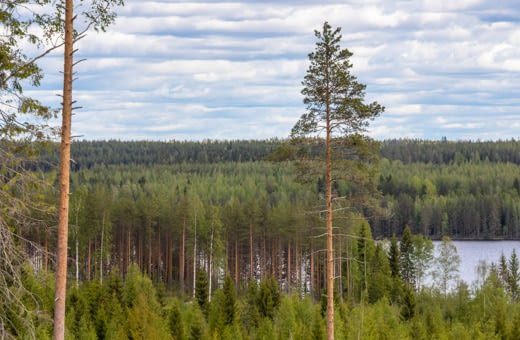Recycled fibre is an important raw material for paper manufacturing. In 2020, almost 94% of all paper and cardboard consumed in Finland was recovered. The European-wide recycling rate of paper for recycling in 2020 was approximately 74%. The recycling rate has reached a record high with the help of, among other factors, the voluntary recycling objective set by the European paper industry already in 2011. In addition, importers of paper products as well as manufacturers and importers of paper used in the manufacture of paper products in Finland have an obligation under the Waste Act to organise the waste management of their products at their own expense when the products are discarded. The same obligation applies to packagers using carton packages and importers of products packaged in them.
About half of the paper used in Europe is made of recycled fibres. Recycled fibre is most commonly used in packaging materials and newsprint.
Collection of paper and cardboard for recycling is efficient in Finland
In Finland, nearly all recycled fibre available is used. In 2020, almost 610,000 tonnes of paper and cardboard was recovered in Finland, and the Finnish industry used approximately 570,000 tonnes of recycled fibre. Some recycled fibre is also imported into and exported from Finland. In 2020, the net exports, or the difference between exports and imports, totalled about 33,000 tonnes. More than half of the total was used to produce packaging materials, and the other half was used for other purposes, such as the manufacture of newsprint and tissue paper as well as insulation material and other paper and cardboard products.
According to the statistics compiled by the ELY Centre for Pirkanmaa, the volume of paper for recycling recovered from households in Finland in 2020 was almost 193,000 tonnes, and the recovery rate was as high as 91%. Unfortunately, a small portion of the valuable raw material still ends up in mixed waste and consequently in a waste incineration plant.
Only around 7% of the fibre material used in the Finnish paper and cardboard industry is recycled fibre, while elsewhere in Europe the average share of recycled fibre of all raw material is around 50%. Paper manufacturing in Finland is mainly based on the use of virgin fibre, and in this way the paper recycling cycle in Europe is supplied with fresh virgin fibre.
Virgin fibre is a natural choice of material in Finland
About 95% of paper manufactured in Finland is exported, which means that the paper is recovered mainly in Central Europe, the largest market area of the Finnish forest industry. Importing paper for recycling into Finland from elsewhere than nearby areas is not reasonable for economic nor environmental reasons due to the costs and emissions caused by long-distance transports, for instance.
The choice of raw material for paper – virgin or recycled fibre – is largely determined by the availability of these fibres in each country. In areas with rich forest resources and a small population the main raw material for paper is virgin fibre.
In densely populated countries where there is an abundance of recycled fibre available, paper is mostly manufactured with recycled fibre. Paper manufacturing in Finland is based on virgin fibre and in Central Europe on recycled fibre. The production of Finnish factories located in the densely populated Central Europe is also largely based on recycled fibre, as there is more recycled fibre available.
Using recycled fibre is not possible without virgin fibre
It has been estimated that if only recycled fibre was used in the European paper industry, paper production would cease in only a couple of months, as recycled fibre cannot be used to manufacture paper indefinitely – strong virgin fibre is also needed in the mixture. Through recycling, natural resources are used efficiently and the sustainable use of them is supported. Wood fibre can be recycled from 5 to 7 times. After that the quality of the fibre, such as strength, deteriorates. However, it can still be used for energy production, among other things.
Not all paper grades can be recycled. These include cigarette paper, wallpapers, books and hygienic papers, for instance. These papers are estimated to account for about 22% of all paper consumption.
Statistics on paper for recycling
Encore Environmental Services (former Paperinkeräys Oy)







